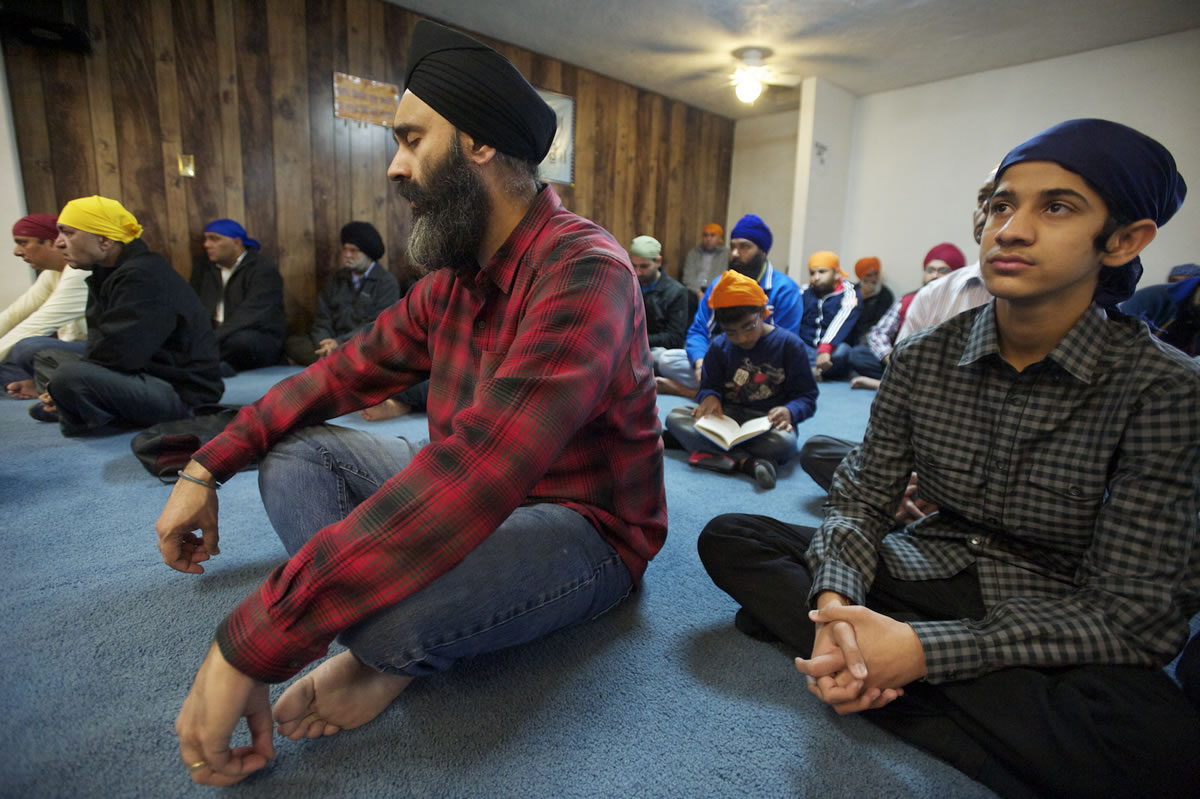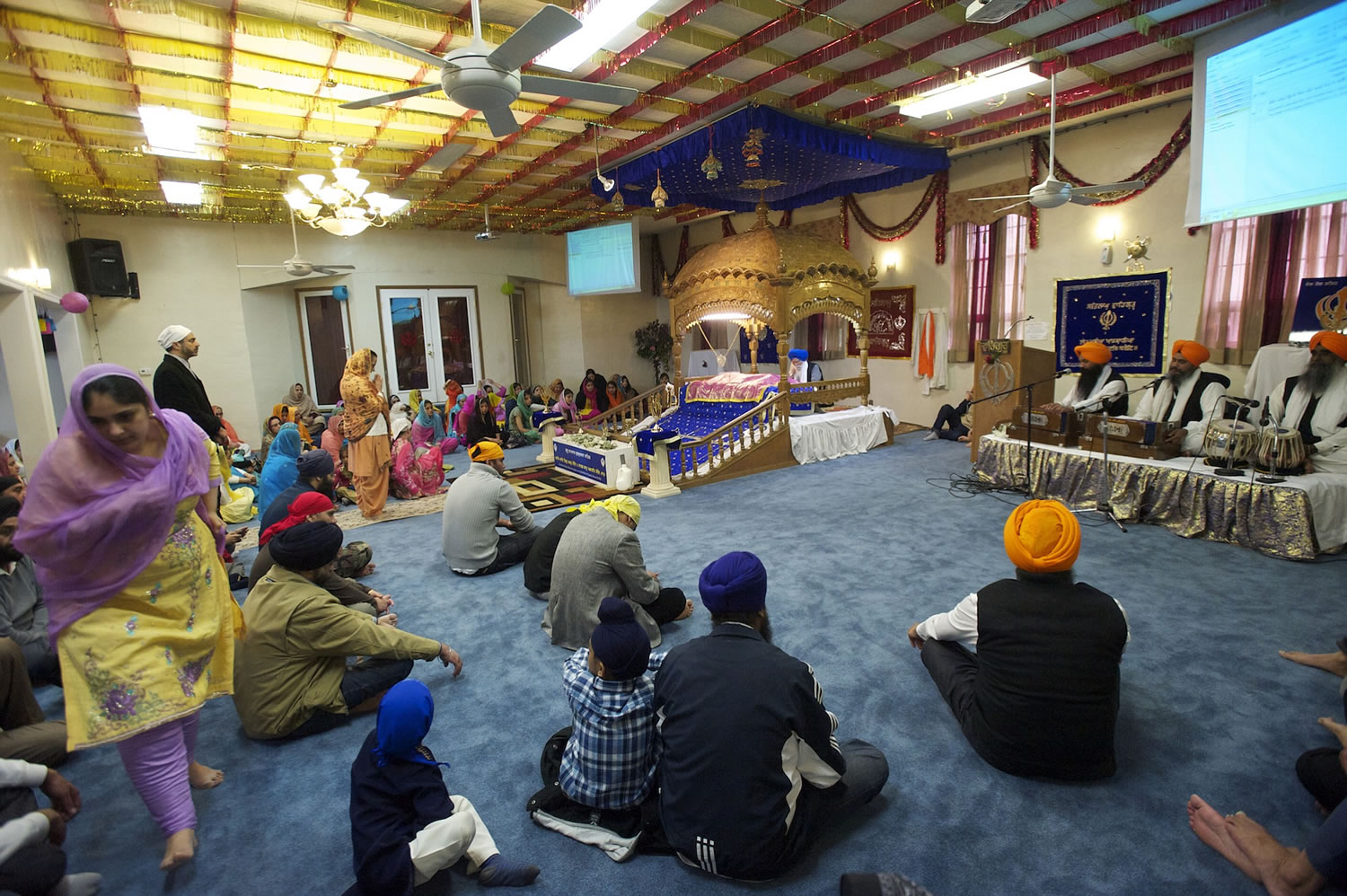There are five ways that many Sikhs embody their religious commitment daily. These are considered “articles of faith,” publicly identifying the bearers as Sikhs.
“The last human guru said don’t hide. Don’t be identified as a Sikh only when it’s convenient,” said Akashdeep Singh of Beaverton, Ore. “Don’t be an opportunist.” Nonetheless, not all Sikhs strictly observe all five articles.
The most obvious article of faith is uncut hair covered by a clean turban or scarf. Growing hair is considered acceptance of God’s will and living naturally; the clean covering shows dignity and self-respect.
The other articles of faith are a small wooden comb, signifying physical and mental hygiene; a steel bracelet, symbolizing strength and restraint; a small defensive knife or dagger; and cotton draw-string underwear, signifying moderation and modesty.





